Want to add a unique but easy care houseplant to your collection? Let's chat about Sansevieria Fernwood care and if it might be perfect for your home!
Are you looking for an easy and low-maintenance plant that also looks gorgeous? If you want to spruce up your home and add a little greenery, then the Sansevieria Fernwood is a great!
It is basically indestructible, and today we’re looking into the complete care guide to help you maintain this lovely green plant. Keep reading to discover how you can give it a nice home where it would thrive.

More snake plant goodness!
- Snake plant care guide
- Sansevieria Fernwood care guide
- How to propagate snake plants
- Why is my snake plant getting brown tips?
- Why is my snake plant turning yellow?
- Why is my snake plant drooping?
Free printable snake plant care guide!
Join the (free!) KeepYourPlantsAlive+ community to access this exclusive printable plant care guide! Once you sign up, you can right click & save the JPG care guide. Or keep scrolling for more!
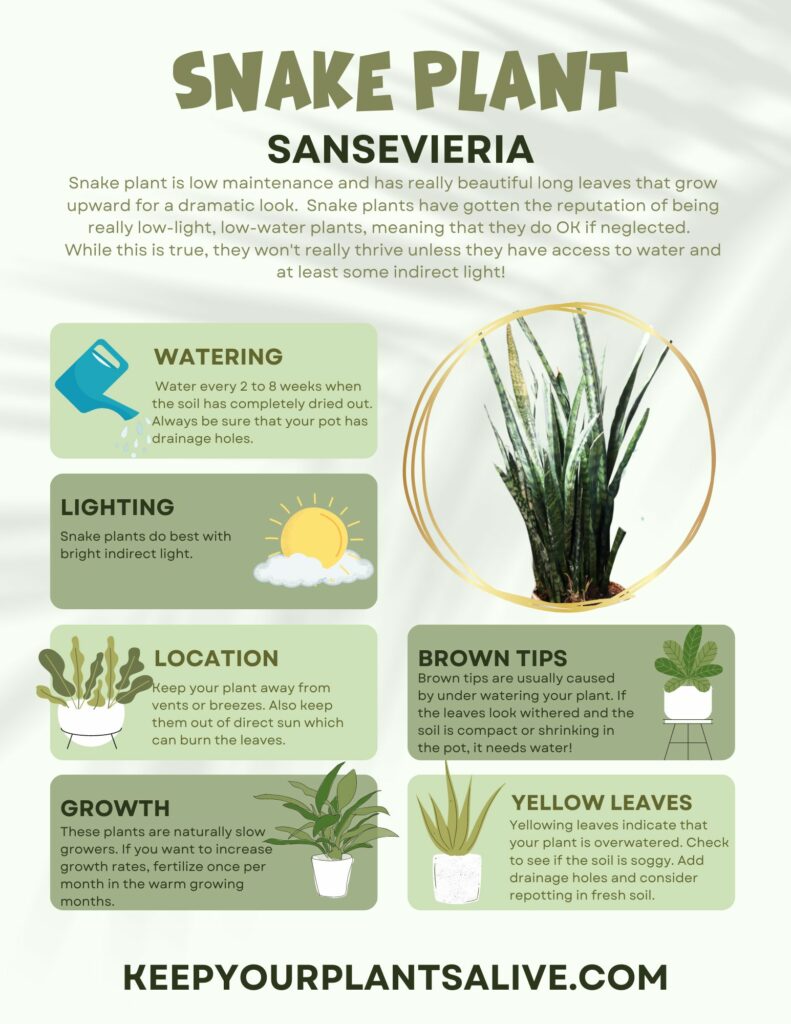
What is Sansevieria Fernwood?
Sansevieria is an evergreen succulent native to South Africa, South Asia, and Madagascar. It has a very specific appearance with elongated, thick leaves with pointed ends.
As the plant grows bigger, the leaves start arching outwards slightly. They all grow vertically upward from the base of the plant, also known as the plant body.
Each leaf is printed with a faded snakeskin pattern.
The leaves are thicker and more tube-like compared to the flat, tongue-like leaves on your typical snake plant. They almost feel like aloe leaves!
The unique appearance of this hybrid snake plant gives it a very contemporary look. The remarkable fountain shape makes it the perfect choice for all those looking to add a unique aesthetic to their houseplant collection.
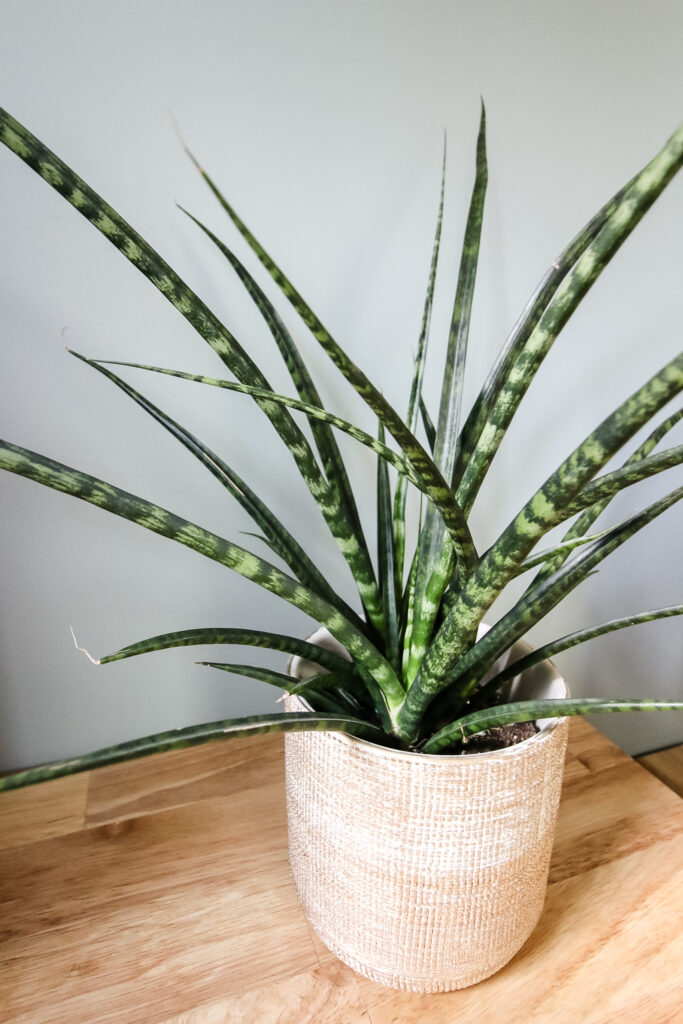
How to care for a Fernwood Sansevieria
The basics of the Sansevieria Fernwood care means providing it with good soil and proper lighting. Here’s what this means in more detail:
Fernwood Sansevieria Lighting needs
Regarding its lighting needs, remember that this is a slow-growing plant, meaning it can survive in low light.
However, giving it lots of bright indirect light is best because this can make it grow faster.
You need to be careful about dry and brown tips or spots on the leaves, as those often indicate that your plant is too exposed to the sun.
If you decide to keep it near a window, then make sure that the window is covered with a light curtain to help to diffuse the light.
If you place your plant outdoors, give it a shady spot like a covered porch to avoid sunburn.

Fernwood Sansevieria watering needs
These snake plants are known for being drought-tolerant, so you needn’t worry about making a strict watering schedule.
They need minimal amounts of water, and not very often.
Any Sansevieria Fernwood can survive extended periods without water, so it’s okay if you forget to water it as per a certain schedule.
How to know when it’s time for watering?
The look of the plant’s soil is the best indicator, and it means that it should be dry before you decide that it’s time to water it again.
Depending on the humidity and temperature in the environment, this usually means that you’ll need to supply the plant with water every 1-2 weeks.
If you’re wondering how to water your plant, you should know that you should pour water directly over the soil, not the leaves. This is because pouring water at the center of the leaf cluster might make it rot.
These plants are almost indestructible, except when it comes to overwatering. This is their weak spot, and they would rather go a few extra days without water than soak in it.
A good rule of thumb is always checking the soil before watering it. If it’s still moist, give it a few days to dry out, and recheck it before adding water.
Be sure that your pot has drainage holes to avoid pooling water, which can lead to root rot!
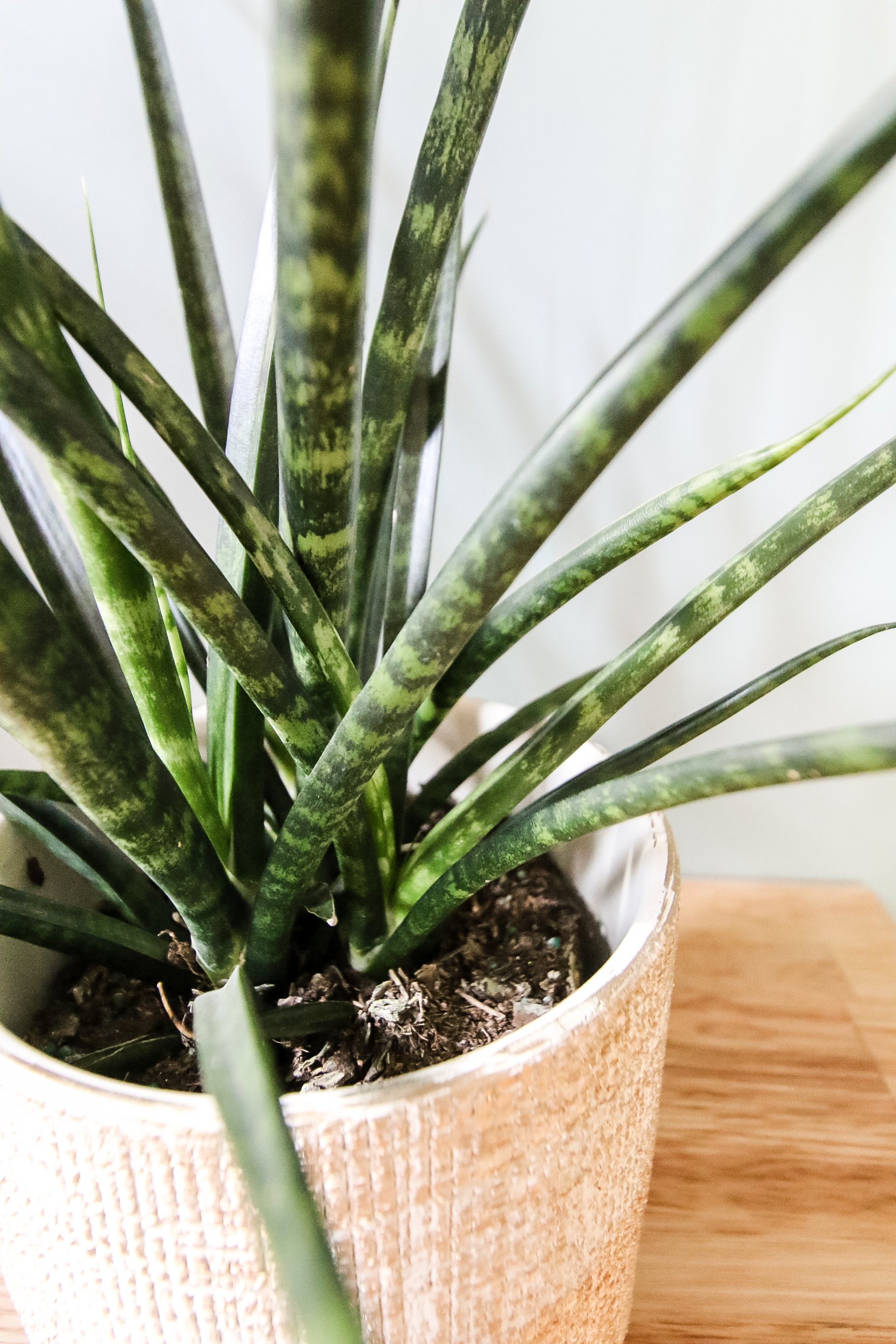
Fernwood Sansevieria fertilization
When it comes to fertilizing, the Sansevieria Fernwood care process has rather simple requirements. You can add some fertilizer once a month during the warmer seasons (summer and spring) with a specially formulated fertilizer for snake plants.
During the winter, the plant is dormant. This means that its growth slows down and doesn’t need any fertilization.
Another thing you should keep in mind is not to fertilize your plant if it has been re-potted recently or has some health issues. This can lead to the plant going into shock!
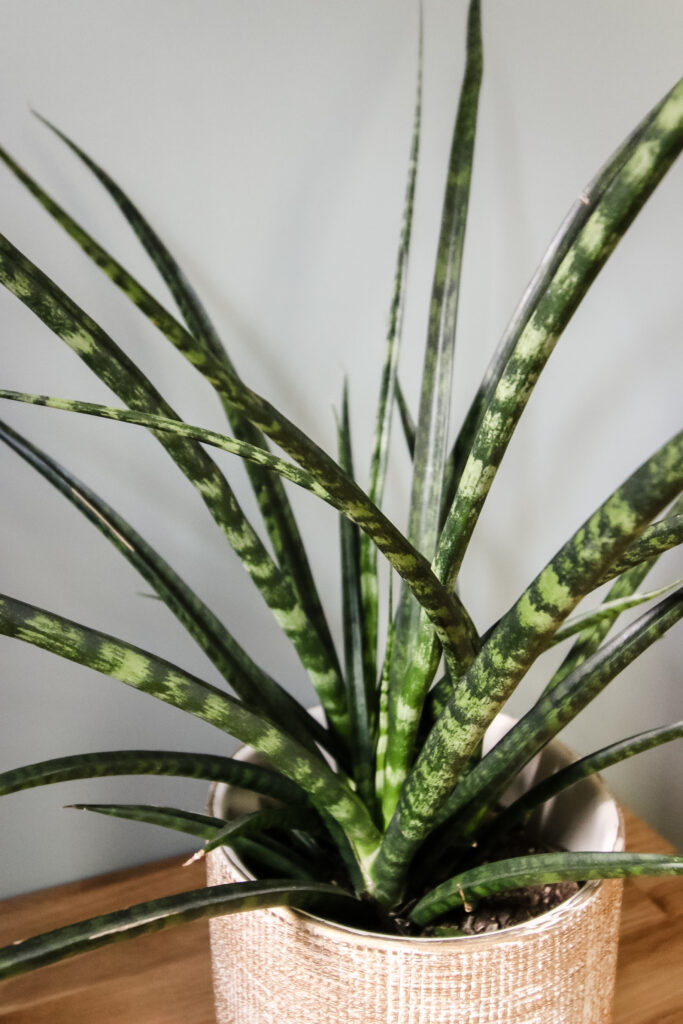
When to repot a Fernwood Sansevieria
The Sansevieria Fernwood has a few replanting needs, too. The first rule you need to remember is that it doesn’t need to be replanted often.
Check the roots first and notice their length. If they’ve begun growing from the drainage holes in the bottom of the pot, then you need a bigger pot.
Also, if the pot is completely filled with leaves, then the plant needs a bigger one immediately.
All you need is a pot one size (1-2" in diameter) bigger than the one your plant is in currently.
A too large pot can keep the soil wet for longer, resulting in root rot.
Choose a pot with drainage holes on the bottom, a well-draining succulent soil, and give your snake plant the necessary drainage.
In terms of replanting, it’s best to do this in the springtime, so the plant will be actively growing and will adjust to the new home.
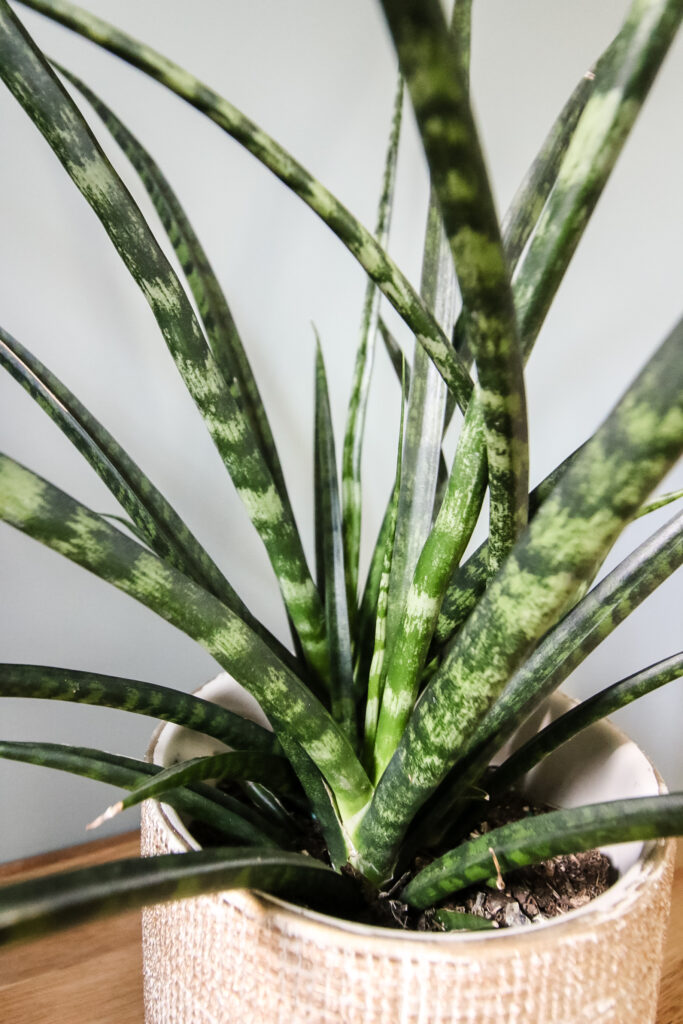
Snake plant propagation
Propagating the Fernwood snake plant means removing and replanting the baby pups or dividing the underground rhizomes.
Another way to ensure a successful propagation is through leaf cuttings (placing them in water), but this process takes a much longer time - you might end up waiting weeks before you see roots or new leaves growing.
On the other hand, if you’re patient enough, this is the easiest and by far the most effortless way to propagate this plant.
Is this plant prone to pests?
Managing pests is yet another very important part of Sansevieria Fernwood care. The snake plant is not particularly prone to common pests but can still suffer from an infestation.
Pests you need to watch out for are spider mites and mealybugs. Inspect your plant often to make sure you got things under control!
Most pests can be treated by wiping down the leaves and spraying with neem oil.
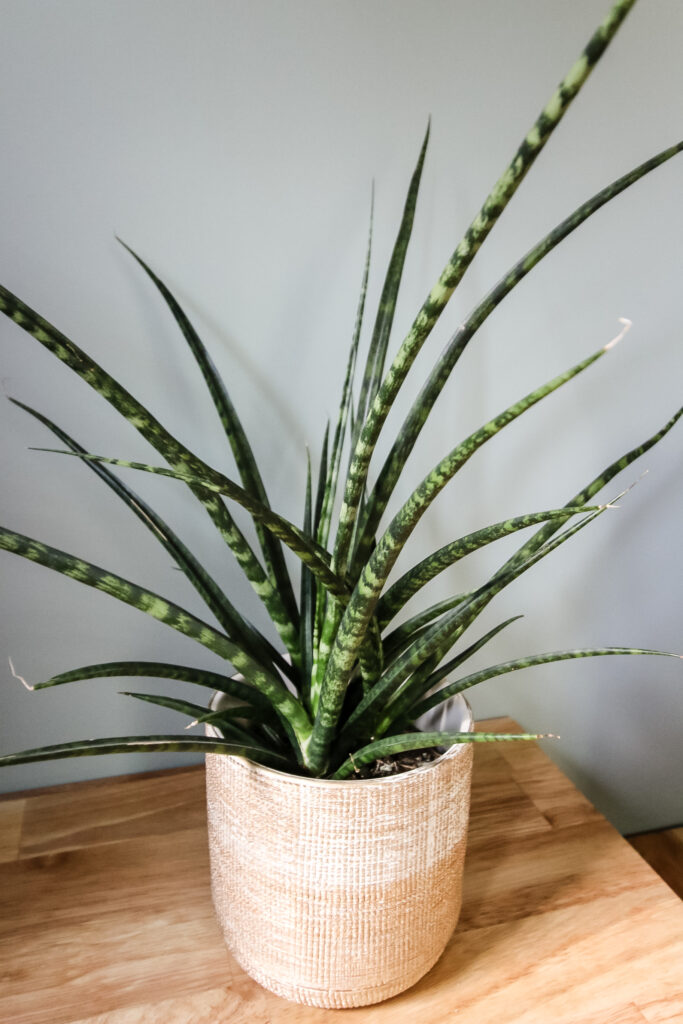
Is Fernwood Sansevieria toxic?
The plant is a slightly toxic plant when ingested, causing diarrhea, vomiting, and nausea. There have been some rare occasions where children or pets get seriously sick from eating it. But to be safe, it’s best to keep your succulents away from children and pets.
This type of Sansevieria plant is very easy to care for, and some people even find it indestructible. If you’re a beginner and want to make an introduction to the wonderful world of plants, getting this particular one is a safe and smart choice.
Thanks to its resiliency and magnificent look, we’re sure that it will catch the eye of anyone who passes by.
Free printable Fernwood Snakeplant Care Guide
If you enjoyed reading this blog, we have some good news for you! Learn everything you need to know about caring for this plant by downloading our free PDF Sansevieria Fernwood care guide!
Join the (free!) KeepYourPlantsAlive+ community to access this exclusive printable plant care guide! Once you sign up, you can right click & save the JPG care guide. Or keep scrolling for more!
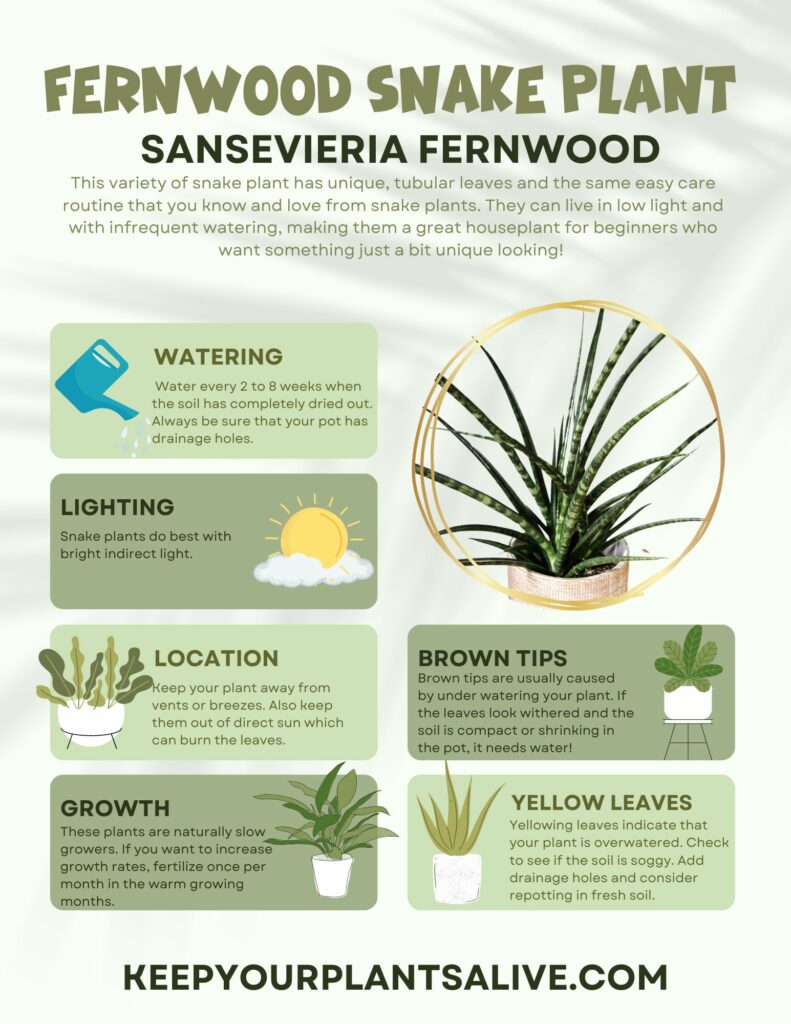
Any more questions about the fernwood snake plant?
Thanks for reading!


Hey there, I'm Morgan, a houseplant enthusiast from sunny Charleston, South Carolina. Growing up surrounded by my mom's lush orchids and African violets, I discovered the magic of bringing nature indoors. Thanks to the pandemic, I delved deeper into houseplants, discovering their power to uplift moods and transform spaces. I'm here to spill all my secrets, helping you pick the perfect houseplant - and make it happy. Let's keep your plants alive, together! 😊




